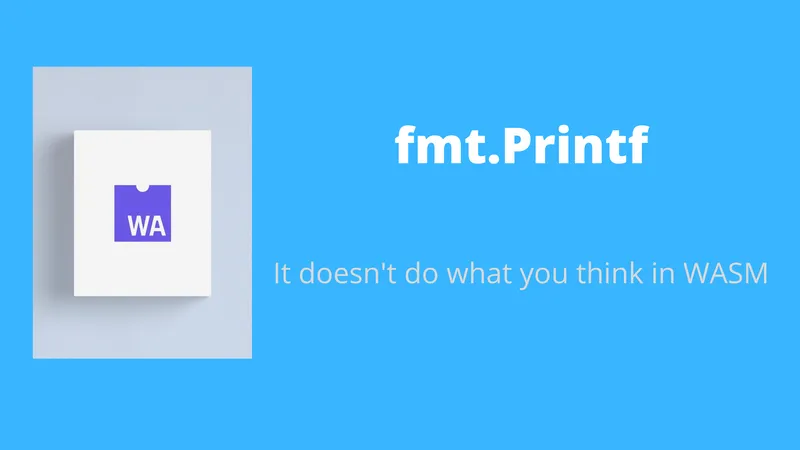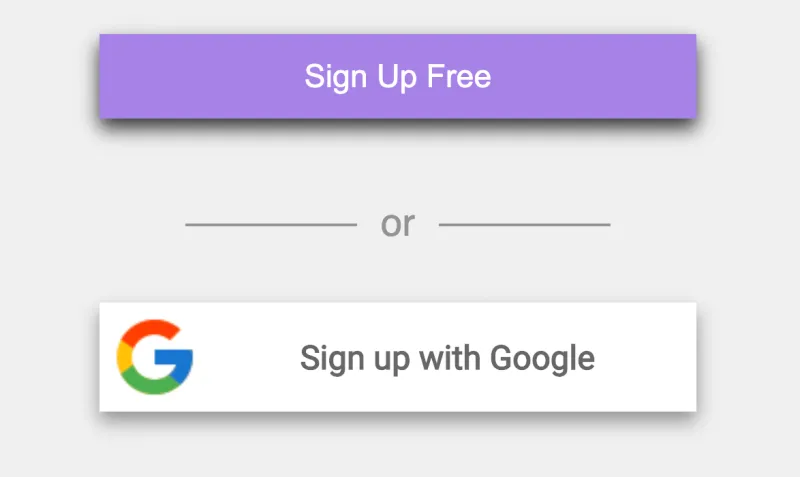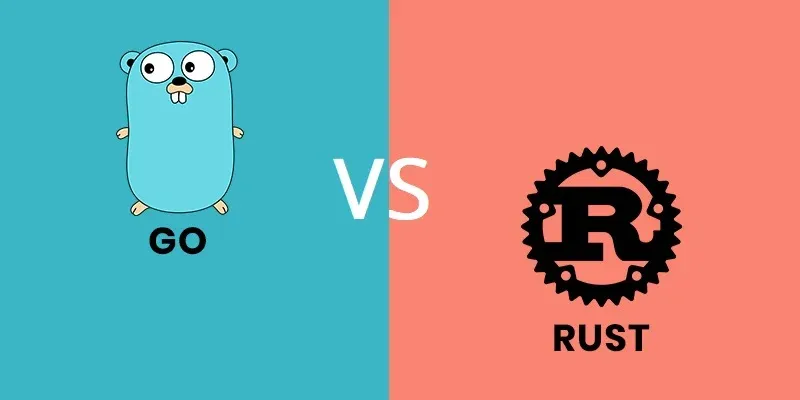Golang - Pg. 2
-


How and Why to Write Enums in Go
Apr 19, 2021 by Lane WagnerAn enum (short for enumerator), is a set of named constant values. An enum is a powerful tool that allows developers to create complex sets of constants that have useful names and yet simple and unique values.
-


Splitting a String into a Slice in Golang
Apr 15, 2021 by Lane WagnerI can’t begin to tell you how often I split strings in Go. More often than not I’m just parsing a comma-separated list from an environment variable, and Go’s standard library gives us some great tools for that kind of manipulation.
-


For Loops in Go
Apr 10, 2021 by Lane WagnerFor loops are a programmer’s best friend! They allow us execute blocks of code repeatedly and iterate over collections of items. In Go, there are several different ways to write one.
-


Using a High-Level RabbitMQ Client in Golang
Mar 10, 2021 by Lane WagnerSo you might already know that the amqp package is awesome and you can get up and running with just 40-50 lines of simple code. Unfortunately, the bare-bones amqp library doesn’t handle a lot of the stuff you probably wish it did, things like reconnecting logic, the spawning of threads, queue and binding boilerplate, and flow control.
-


Why should you learn Golang? [2022]
Feb 08, 2021 by Meghan ReichenbachGolang has skyrocketed in popularity year over year, making it one of the best choices for career-conscious developers to learn. As an example, StackOverflow’s Developer survey saw it climb in popularity among developers from 10th in 2019 all the way to 5th in 2020. Additionally, a full 32% of developers surveyed in Insights Dice want to learn it. Go developers are paid well - globally, the StackOverflow survey found that Perl, Scala, and Go programmers have the highest salaries.
-


Should You Commit the Vendor Folder in Go?
Nov 16, 2020 by Lane WagnerIf you’re asking “should I commit the vendor folder in my Go project to Git?”, the answer is “almost always”. Let’s talk about why committing is generally better than not.
-


Learn Go Fast - Top Courses and Resources
Nov 02, 2020 by Lane WagnerWant to learn Go fast? The good news is that Go is one of the simplest programming languages out there. It was designed to have a compact feature set, which means you can learn it much faster than most other languages.
-


How to Structure a Golang Project
Oct 01, 2020 by Lane WagnerI lead a team that’s responsible for anywhere from 15-25 Go microservices at any given time. We’re constantly creating new services and libraries, so it’s become important to streamline the project creation process. I’m mostly writing this article for myself as a kind of self-documentation, but hopefully, you’ll find it useful as you create new Go projects for yourself.
-


Running Go in the Browser with WASM and Web Workers
Sep 23, 2020 by Lane WagnerWe’ve recently made big changes to how we execute Go in the browser on boot.dev and want to explain the enhancements. Web Workers are the reason we’ve been able to solve some of the serious browser-related coding problems that were holding us back. Consider this article a sequel to Running Go in the Browser with Web Assembly.
-


How to Make Pure Functions in Golang
Sep 07, 2020 by Lane WagnerPure functions are often hyped up in the JavaScript world, probably because of the abundance of stateful front end applications. While pure functions have their downsides (i.e. inconvenience, potentially large argument lists), they should be used as much as reasonably possible.
-


Create a Golang Video Streaming Server Using HLS
Sep 04, 2020 by Lane WagnerIn this tutorial, we’ll go step-by-step through building a video streaming API (which will work for music as well) in Go. Don’t worry, it’s surprisingly easy to build a robust media streaming server, especially if we utilize a modern communication protocol, HLS.
-


Should You Return Empty or Nil Slices in Go?
Sep 03, 2020 by Lane WagnerIn Go, we often need to return zero values. Idiomatic Go encourages the use of guard clauses, and guard clauses necessitate the need to return early. When returning early with an error, by convention all other return values should be zero values. The confusion arises with data types like maps and slices. Should maps and slices be returned as a simple nil value, or should an empty but instantiated value be returned?
-


Top 15 Golang Interview Questions [Updated 2024]
Aug 31, 2020 by Lane WagnerLet’s take a look at some good technical questions to be familiar with, whether you are looking to nail your next Golang interview, or if you’re the interviewer yourself..
-


Unexpected Printf Behavior in Go WASM - Nothing Prints
Aug 10, 2020 by Lane WagnerWhile working on boot.dev’s Go Playground, I came across a very strange error. The standard library’s fmt.Printf() function prints nothing to the console when called. Nothing.
-


Authenticate Users with "Sign In With Google" in Golang
Jul 22, 2020 by Lane WagnerUsers love convenience. If your goal is to make it easy for users to register with your app or website, then implementing the “Sign in with Google” option should be at the top of your priority list. If you are like me, then you may find Google’s documentation on the subject to be lackluster at best, and downright confusing at worst. Here we will go step-by-step through the authentication process so you can implement Google sign-in easily.
-


Rust Backend vs Go Backend in Web Development
Jul 17, 2020 by Lane WagnerRust and Go are two of the industry’s biggest successes when it comes to developing modern programming languages. Both languages compete in terms of backend web development, and it’s a fierce competition. Golang and Rust are new languages, have growing communities, and are fast and efficient. When it comes to microservice architectures, frameworks, and apps, Rust and Go are household names on the backend.
-


Running Go in the Browser With Web Assembly (WASM)
Jul 01, 2020 by Lane WagnerIf you are familiar with the Go Playground, then you know how convenient it is to be able to have a Go scratchpad in the browser. Want to show someone a code snippet? Want to quickly test some syntax? Browser-based code pads are helpful. On that note, I created a new playground. The cool thing about this new playground that it doesn’t use a remote server to run code, just to compile it. The code runs in your browser using web assembly (WASM).
-


Make Maps and Slices in Golang - A Guide to Initialization
Jun 29, 2020 by Lane WagnerThere are quite a few ways to create new maps and slices in Go, for example, they can both be initialized using the make() function, the new() function, as literals, or by using the var keyword. With so many choices, which option is best? Or perhaps better asked, which one is best in your situation? Let’s take a look.
-


Go's WaitGroup vs JavaScript's PromiseAll
Jun 04, 2020 by Lane WagnerIn applications that are i/o heavy, it can get clunky to synchronously execute high-latency functions one after the other. For example, if I have a web page that needs to request seven files from the server before it can show the page, I need to asynchronously fetch all those files at the same time. The alternative of making each request one at a time will take much too long. This is where JavaScript’s PromiseAll and Go’s WaitGroup come in.
-


How to Sort a Slice in Go
May 27, 2020 by Lane WagnerSorting is a common task in programming, and for that reason, most languages have a default sorting algorithm in their standard library. Go is one such language. Go has gone about providing sorting functionality in one of the most elegant ways possible, via an interface.
-


Don't Go To Casting Hell - Use Default Native Types in Go
May 21, 2020 by Lane WagnerGo is strongly typed, and with that, we get many options for simple variable types like integers and floats. The problem arises when we have a uint16, and the function we are trying to pass it into takes an int. We find code riddled with int(myUint16) that can become slow and annoying to read. In other words, when Go developers stray from the “default” type for any given type family, the code can get messy quickly.
-


Rust vs Go - Which Is More Popular?
May 06, 2020 by Lane WagnerGo and Rust are two of the hottest compiled programming languages, but which is more popular, Go or Rust?. I develop in Go full-time and love it, and I’m learning more about Rust recently - it’s an exciting language. Let’s explore some differences between the two and look at which is growing faster in the popularity polls.
-


Range Over Ticker In Go With Immediate First Tick
Apr 30, 2020 by Lane WagnerThe Go standard library has a really cool type - Ticker. Tickers are used when you want to do something at a regular interval, similar to JavaScript’s setInterval. Here’s an example:
-


Using 'Go Generate' To Deploy Multi-Process Apps
Apr 22, 2020 by Lane WagnerIn microservice architectures, it’s fairly common to have a project that includes different worker types. A Makefile can be used to manage the creation of multiple programs, but the Go toolchain has a tool that can be used as well, go generate. Here are some examples of how it can be used:
-


What Are Golang's Anonymous Structs?
Apr 21, 2020 by Lane WagnerAn anonymous struct is just like a normal struct, but it is defined without a name and therefore cannot be referenced elsewhere in the code.